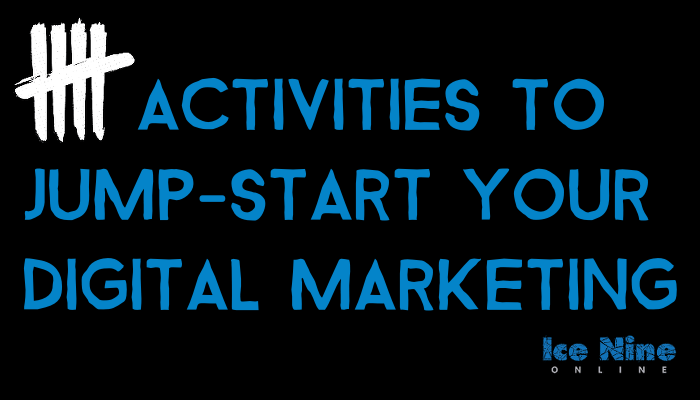1. Perform keyword research over a minimum of 5,000 keywords to identify the ideal keywords for SEO optimizations and Google Ads targeting.
Process:
Log in to Google Ads > Tools > Keyword Planner > “Search for new keywords using a phrase, website, or category” > input keywords relevant to your business > switch from “Ad Group ideas” tab to “Keyword ideas” tab > hit “Download” button and export to Excel .csv > Clean up the data in Excel so you’re only seeing what you need to (example below) > Pick optimal keywords for SEO optimizations/Google Ads

Why is this important?
The backbone of a good on-page SEO strategy is to identify the high search volume/low competition, relevant keywords to optimize your website for. This is to ensure that you display your website to your target market and do not waste time and budget optimizing to keywords that will not increase sales. I stress long-tail keywords – multi-word keyword combinations that are specific to how a user would search for a particular product or service. i.e. optimizing for “men’s grey vneck tshirt” vs. “men’s shirt” or “best Chicago general practice attorney Lincoln Park” vs. “Chicago attorney”. Long-tail keywords are typically less competitive and higher-converting than short-tail keywords.
Time considerations:
Keyword research can be a time-consuming process, especially your initial round of research. Typically if you’re performing keyword research over 5,000-10,000 keywords and manually cherry-picking keywords, your initial keyword research may take 3-6 hours minimum, though it could take less time if you’re already familiar with Google’s Keyword Planner and Excel.
2. Optimize your website with keywords for SEO: Start with Title Tags, H1 Tags, On-Page Content, and URLs.
Process:
Log into the back-end your site > Edit your site’s pages or use an SEO plug-in like Yoast > Optimize with SEO keywords (from your keyword research, #1 above)

Why is this important?
The above elements, primarily Title Tags, are the low-hanging-fruit from a back-end optimization perspective. In some cases, just by optimizing these elements with the proper keywords, you’re able to achieve first-page search engine rankings for your target keywords. Example: if you’re a bankruptcy attorney and the H1 (header) on one of your website’s pages is “Our Services”, you can better optimize that page by making it “Our Bankruptcy Services”. NOTE: You do have to be careful not to over-optimize. The rule of thumb is that if it looks spammy to you, it probably looks spammy to Google and your site’s visitors.
Time considerations:
Your initial optimizations may take a significant amount of time (especially if your site is currently not well optimized), typically 5-10 hours+ depending on the amount of pages and content in your site. Back-end elements should be updated on a recurring schedule based on the data from Google Analytics (or whatever analytics tool you use). Bi-monthly is typically sufficient though that can change based on the size of your website.
3. Set up Google Ads and create a (branded) initial Search campaign.
Process:
Log in to Google Ads or create a new Google Ads account (if you do not have one) > +CAMPAIGN radio button > Search Network > Create campaign and ad group/ads > Bid on your brand name (including variations)
Why is this important?
Creating a branded (your company/brand name) Google Ads Campaign allows you to:
- Dominate the first page of Google when someone searches for you.
- Play defense against competitors who are bidding on your brand name.
- Maximize clicks by showing both a paid advertisement for the brand along with organic search results.
- Ensure first-page ranking inexpensively (branded clicks are typically very inexpensive).
- Take advantage of Google Ads features like Call extensions, Sitelink extensions, Callout extensions, Review extensions, Location extensions to improve your click-through-rate and conversion rate.
Time considerations:
Creating an initial, basic Search campaign can be done in an hour or two, however, you should create a schedule to check your Google Ads performance on a recurring basis.
NOTE: There’s an art and science to creating effective advertising campaigns in Google Ads. Google offers excellent information and Google Ads tutorials if you need help getting started. If you determine that Google Ads is an effective channel to drive leads/sales to your business, you’ll likely want to create additional campaigns, ad groups, ads, add Ad extensions, day-parting, test targeting settings, and target additional keywords – the list of features and improvements that can be made to your campaigns is never-ending, as Google is continuously adding new features and updates for advertisers. Google Ads offers advanced advertising technology for people who want to create highly targeted campaigns; much time can be spent learning the ins and outs. Typically the higher your budget in Google Ads, the more time you should spend creating, testing, optimizing, and assessing campaigns.
4. Install and configure Google Ads Remarketing code and create an Google Ads Remarketing Campaign.
Process:
Log into Google Ads > Shared Library > Audiences > +REMARKETING LIST radio button > Create a Remarketing List > Create a Remarketing Tag > Add the tag to your website > Check that you installed the tag correctly by installing the Google Tag Assistant for the Chrome browser and then going to your website and clicking the Google Tag Assistant icon (if you see a green smiley face next to the “Remarketing” tag, it’s tracking properly).

Why is this important?
Remarketing allows you to track visitors to your website and show them ads after they leave your site – basically tracking them around the web showing ads for your brand. The conversion rate from Remarketing ads is typically very high – in many cases 150%+ higher than a standard campaign. Remarketing is a no-brainer. On Google’s Display network, not only are the Remarketing clicks inexpensive but every time someone sees the ad but doesn’t click, you receive a free impression/branding. If your ad wasn’t there, the user would be seeing an ad for someone else – it’s a non-intrusive, extremely effective advertising channel.
Time considerations:
Installing Remarketing code in your site should take less than an hour for a competent developer, however once your cookie pool (stored IP addresses) becomes large enough for you to begin displaying ads to visitors to your site, it may take you 2-3 hours to create an initial Display campaign and then additional time to create additional campaigns. Also, you’ll need to create the Display ad designs, which will require some time and a graphic designer, though Google does offer an ad creator tool for those without design expertise.
5. Install and configure custom Google Analytics Dashboards and Reporting.
Process:
Log in to Google Analytics > Dashboards & Reporting > Create custom reports based on your goals and/or install Ice Nine Online Dashboards (PM me, I’ll send them over).
Here’s a Google Analytics dashboard creation tutorial in the Ice Nine Online blog.
Why is this important?
It’s EXTREMELY important that you track the important traffic and performance data for your website and create measurable goals around that data. Google Analytics is a powerful tool to assess the effectiveness of your website and other online properties.
Time considerations.
The initial report/dashboard creation will take a few hours, but once you have created the reports it will be a matter of adding additional dashboards and reporting on an ongoing basis, based on the KPIs for your business.
 Sample Google Analytics Dashboard
Sample Google Analytics Dashboard
As with any marketing tactic, testing is crucial. The more time you spend testing and assessing the effectiveness of campaigns, the more successful your marketing will be.
Share this Post

